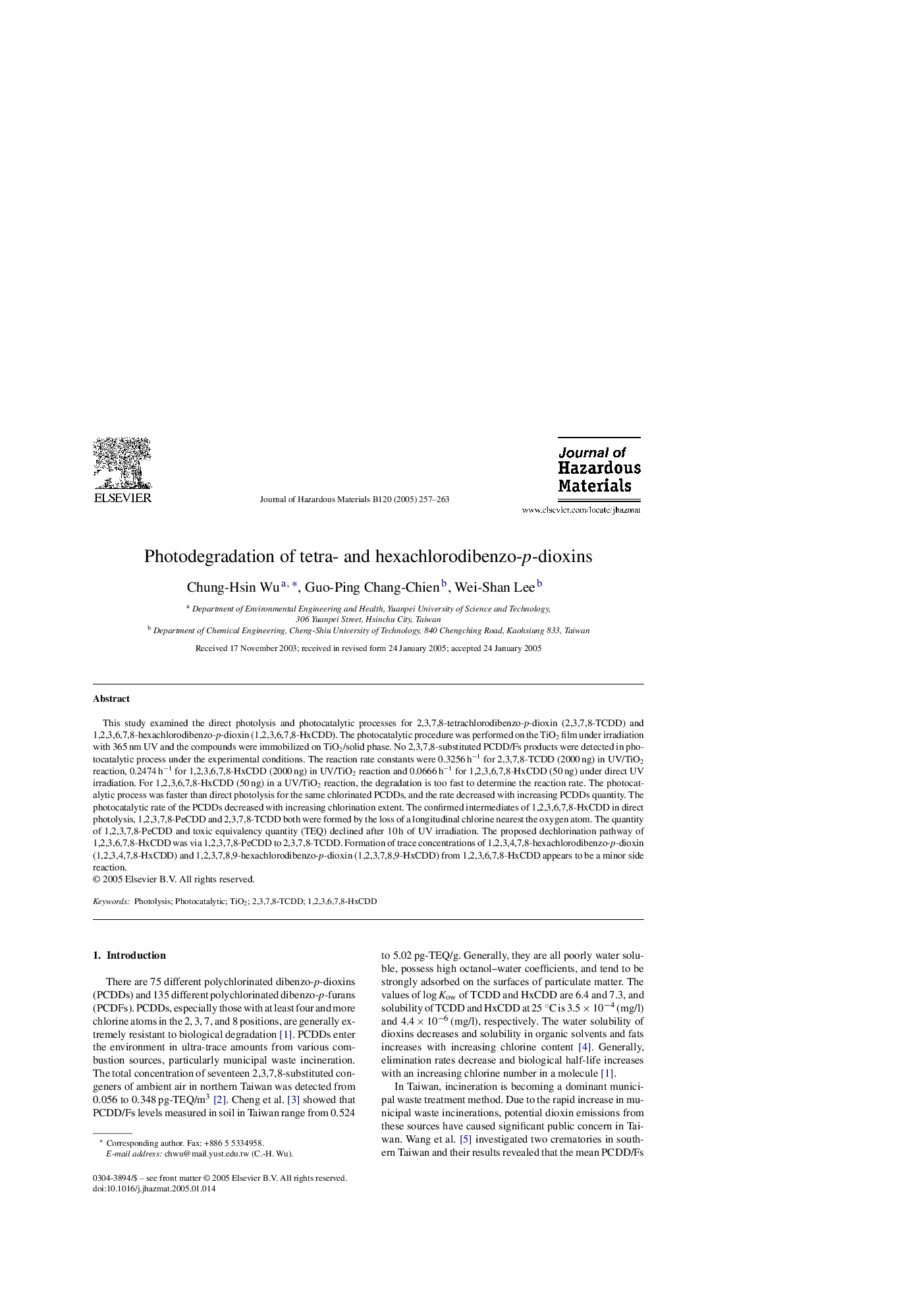| Article ID | Journal | Published Year | Pages | File Type |
|---|---|---|---|---|
| 9674326 | Journal of Hazardous Materials | 2005 | 7 Pages |
Abstract
This study examined the direct photolysis and photocatalytic processes for 2,3,7,8-tetrachlorodibenzo-p-dioxin (2,3,7,8-TCDD) and 1,2,3,6,7,8-hexachlorodibenzo-p-dioxin (1,2,3,6,7,8-HxCDD). The photocatalytic procedure was performed on the TiO2 film under irradiation with 365Â nm UV and the compounds were immobilized on TiO2/solid phase. No 2,3,7,8-substituted PCDD/Fs products were detected in photocatalytic process under the experimental conditions. The reaction rate constants were 0.3256Â hâ1 for 2,3,7,8-TCDD (2000Â ng) in UV/TiO2 reaction, 0.2474Â hâ1 for 1,2,3,6,7,8-HxCDD (2000Â ng) in UV/TiO2 reaction and 0.0666Â hâ1 for 1,2,3,6,7,8-HxCDD (50Â ng) under direct UV irradiation. For 1,2,3,6,7,8-HxCDD (50Â ng) in a UV/TiO2 reaction, the degradation is too fast to determine the reaction rate. The photocatalytic process was faster than direct photolysis for the same chlorinated PCDDs, and the rate decreased with increasing PCDDs quantity. The photocatalytic rate of the PCDDs decreased with increasing chlorination extent. The confirmed intermediates of 1,2,3,6,7,8-HxCDD in direct photolysis, 1,2,3,7,8-PeCDD and 2,3,7,8-TCDD both were formed by the loss of a longitudinal chlorine nearest the oxygen atom. The quantity of 1,2,3,7,8-PeCDD and toxic equivalency quantity (TEQ) declined after 10Â h of UV irradiation. The proposed dechlorination pathway of 1,2,3,6,7,8-HxCDD was via 1,2,3,7,8-PeCDD to 2,3,7,8-TCDD. Formation of trace concentrations of 1,2,3,4,7,8-hexachlorodibenzo-p-dioxin (1,2,3,4,7,8-HxCDD) and 1,2,3,7,8,9-hexachlorodibenzo-p-dioxin (1,2,3,7,8,9-HxCDD) from 1,2,3,6,7,8-HxCDD appears to be a minor side reaction.
Related Topics
Physical Sciences and Engineering
Chemical Engineering
Chemical Health and Safety
Authors
Chung-Hsin Wu, Guo-Ping Chang-Chien, Wei-Shan Lee,
